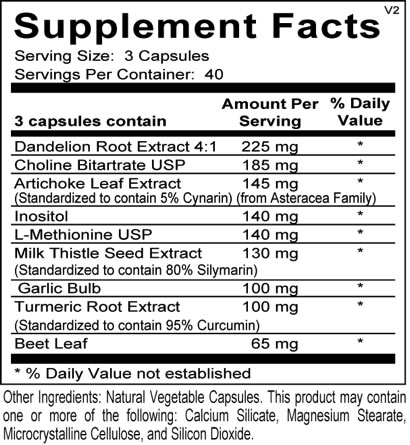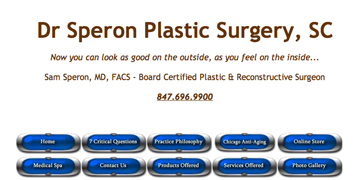Buy Cheap All-Natural Chicago Phyto Nutrient Gastrointestinal Detox Anti-Aging Herbal Supplements Vitamins
 Why pick our Natural Phyto Nutrient Gastrointestinal Detox Herbal Supplement?
Why pick our Natural Phyto Nutrient Gastrointestinal Detox Herbal Supplement?
There are many options available today when choosing vitamins and anti-aging supplements. This means that you have to be careful as a consumer and make sure you choose a reliable manufacturer who only uses the highest quality ingredients. The Chicago Center For Anti-Aging has partnered with one of the most reputable manufacturers which helps ensure the quality of our private line of vitamins and anti-aging supplements. Quality is what should be the most important attribute you should look for to help make your decision, not cost. Look for quality you can trust.
 Natural Phyto Nutrient Gastrointestinal Detox
Natural Phyto Nutrient Gastrointestinal Detox
Form
 Vegetable Capsule
Vegetable Capsule
Other Ingredients
Natural Vegetable Capsules. This product may contain one or more of the
following: Calcium Silicate, Magnesium Stearate, Microcrystalline Cellulose andSilicon Dioxide.
Rationale
Phytocore was created as part of The Core Restore BT Kit. Phytocore supports
phase I and phase II detoxification by providing phytonutrients to help eliminate
toxins and stimulate the liver during a 7-28 day detoxification program.
Research Findings
Overview of Detoxification:
• There are two main pathways of detoxification in the liver, known as phase I and phase II. In phase I, non-reactive compounds undergo specific reactions which use oxygen to form a reactive site on the compound. This new intermediary metabolite must then undergo a phase II reaction, which results in the addition of a water soluble group to the reactive site.
The end result is a compound that is now able to be excreted in the urine, bile, or stool.1
• The phase I detoxification pathway is mainly composed of the cytochrome P450 family of enzymes.2
• Proper function of both phases is essential for detoxification. Increased phase I activity and or decreased phase II activity has been associated with an increased risk of health related issues.2
• Some nutrients have been found to play supportive roles in the detoxification pathways including: artichoke, turmeric, silymarin, garlic, radish root, and many vitamins and minerals.1
Silymarin (Milk Thistle Extract):
• Silymarin is a well known hepatoprotective agent. It has been shown to lower elevated enzyme levels, ease the toxic effects of specific drugs on the liver, and posses anti-inflammatory properties.3
• Silymarin has been shown to play a protective role in the oxidative damage induced by some environmental contaminants such as benzopyrene.
• During the detoxification of some environmental toxins, the major reactive oxygen species generated is hydrogen peroxide. In an in vitro study, silymarin was found to have substantial protective effects attributed to free radical scavenging mechanisms, against exogenous hydrogen peroxide induced oxidative stress damage.4
• An in vivo study showed that silibinin, an active component of silymarin, was able to increase phase II enzyme activity in the liver of rats.5
Artichoke
• Artichoke is a well known choleretic and antioxidant agent, it is often used to increase bile secretion, as an antioxidant, and to support general liver health.
• In a double-blind cross-over study in 20 men and women, artichoke extract increased bile secretion.6
• Artichoke extract protected HepG2 rat cells exposed to peroxide generated in situ by glucose oxidase from oxidative stress, it also prevented the loss of total GSH and the accumulation of malondialdehyde.7
• The effects of artichoke extract on carbon tetrachloride induced oxidative stress and hepatotoxicity in rats was studied. In rats pretreated with artichoke extract, hepatic malondialdehyde and diene conjugate levels decreased and GSH levels increased.
Curcumin
• Curcumin is a potent antioxidant from turmeric, a traditional spice often used in Middle Eastern cooking. Curcumin has been found to have chemoprotective and anti-inflammatory activities.
• Curcumin has been shown to increase glutathione S-transferase, a phase II detoxification enzyme, activity in rodent liver.9
• In an in vitro study examining the effects curcumin has on lymphocytes loaded with arsenic, it was found that curcumin counteracted the damage of arsenic by quenching reactive oxygen species and increasing enzymes like catalase, superoxide dismutase and glutathione peroxidase.10
Methionine and Choline
• Studies show diets deficient in methionine and choline result in liver injury similar to human non-alcoholic steatohepatitis and hepatocellular carcinoma.11,12
• Mice fed a methionine-choline deficient diet were found to have increased fatty acid uptake and decreased VLDL secretion.
The authors conclude these are two mechanisms by which a methionine-choline deficient diet promote intrahepatic lipid accumulation in animals.12
• In a study involving Mexican American men it was found that 550 mg/d of choline is sufficient for preventing elevations in serum markers of liver dysfunction in this population.13
Garlic
• Garlic is a well known spice used in cooking. Through out history, garlic has been used for a number of conditions including fevers, colds, parasitic infections, cardiovascular health, and as an immune supporting agent.
• In a study looking at the effects garlic has on cells loaded with arsenic, it was found that garlic was able to return reactive oxygen species generation to normal values in hepatic tissue.14
Radish Root
• Black radish is a member of the Cruciferae family. Radishes, along with other Cruciferae vegetables, contain glucosinolates which have been shown to promote liver health.
• Spanish black radish extract has been shown to increase the activity of phase I and II detoxification enzymes, including quinine reductase, in human liver cells.15
Dandelion Root
• Dandelion root has many historic medicinal uses. Dandelion has been used as a choleretic and to treat liver and spleen aliments.
• The German Commission E and European Scientific Cooperative for Phytotherapy have approved the use of dandelion root for the restoration of hepatic and biliary function.16
• Studies done in rats, have shown that dandelion root given intraduodenally increases bile secretion.16
Dose
As a dietary supplement, take 2-3 capsules two times per day or as recommended by your health care provider.
Contraindications, Adverse or Other Reactions
Do not take this product if you are pregnant or nursing.
How can I purchase this Natural Phyto Nutrient Gastrointestinal Detox Vitamin?
Even if you are not a member of the Chicago Center For Anti-Aging, you can still purchase any of our private and unique anti-aging supplements and vitamins. You can drop by our office anytime and pick up any of our products. We are conveniently open 7 days a week from 8am-8pm.
If you want to place an order for delivery, call us at 847.696.9900 and you can order anything you want. Mention our website and you will receive 2 day USPS shipping for any sized order for only $5!
Finally, you can also order online at www.buycheapbargains.com, which is the only place online allowed to sell our products...
References
1. Liska, D. J. The detoxification enzyme systems. Altern Med Rev. 1998; 3(3):187-198.
2. Liska, D., Lyon, M. et al. Detoxification and biotransformational imbalances. Explore (NY). 2006; 2(2):122-140.
3. Post-White, J., Ladas, E. J. et al. Advances in the use of milk thistle (Silybum marianum). Integr Cancer Ther. 2007; 6(2):104-109.
4. Kiruthiga, P. V., Shafreen, R. B. et al. Silymarin protection against major reactive oxygen species released by environmental toxins: exogenous H2O2 exposure in erythrocytes.
Basic Clin Pharmacol Toxicol. 2007; 100(6):414-419.
5. Zhao, J. and Agarwal, R. Tissue distribution of silibinin, the major active constituent of silymarin, in mice and its association with enhancement of phase II enzymes: implications
in cancer chemoprevention. Carcinogenesis. 1999; 20(11):2101-2108.
6. Kirchhoff R, Beckers CH et al. Increase in choleresis by means of artichoke extract. Phytomedicine. 1994; 1:107-115.
7. Miccadei, S., Di, Venere D. et al. Antioxidative and apoptotic properties of polyphenolic extracts from edible part of artichoke (Cynara scolymus L.) on cultured rat hepatocytes and
on human hepatoma cells. Nutr Cancer. 2008; 60(2):276-283.
8. Mehmetcik, G., Ozdemirler, G. et al. Effect of pretreatment with artichoke extract on carbon tetrachloride-induced liver injury and oxidative stress.
Exp Toxicol Pathol. 2008; 60(6):475-480.
9. Piper, J. T., Singhal, S. S. et al. Mechanisms of anticarcinogenic properties of curcumin: the effect of curcumin on glutathione linked detoxification enzymes in rat liver.
Int J Biochem Cell Biol. 1998; 30(4):445-456.
10. Mukherjee, S., Roy, M. et al. A Mechanistic Approach for Modulation of Arsenic Toxicity in Human Lymphocytes by Curcumin, an Active Constituent of Medicinal Herb
Curcuma longa Linn. J Clin Biochem Nutr. 2007; 41(1):32-42.
11. Mato, J. M., Martinez-Chantar, M. L. et al. Methionine metabolism and liver disease. Annu Rev Nutr. 2008; 28:273-293.
12. Rinella, M. E., Elias, M. S. et al. Mechanisms of hepatic steatosis in mice fed a lipogenic methionine choline-deficient diet. J Lipid Res. 2008; 49(5):1068-1076.
13. Veenema, K., Solis, C. et al. Adequate Intake levels of choline are sufficient for preventing elevations in serum markers of liver dysfunction in Mexican American men but are
not optimal for minimizing plasma total homocysteine increases after a methionine load. Am J Clin Nutr. 2008; 88(3):685-692.
14. Flora, S. J., Mehta, A. et al. Prevention of arsenic-induced hepatic apoptosis by concomitant administration of garlic extracts in mice. Chem Biol Interact. 2009; 177(3):227-233.
15. Hanlon, P. R., Webber, D. M. et al. Aqueous extract from Spanish black radish (Raphanus sativus L. Var. niger) induces detoxification enzymes in the HepG2 human hepatoma
cell line. J Agric Food Chem. 2007; 55(16):6439-6446.
16. Schutz, K., Carle, R. et al. Taraxacum--a review on its phytochemical and pharmacological profile. J Ethnopharmacol. 2006; 107(3):313-323.
** Information for health care professionals only.
** These statements have not been evaluated by the FDA. This product is not intended to treat, diagnose, prevent, or cure any disease. Consult a physician before taking. Should you experience any serious physical side effects from taking these nutritional supplements, discontinue and call your doctor immediately.




